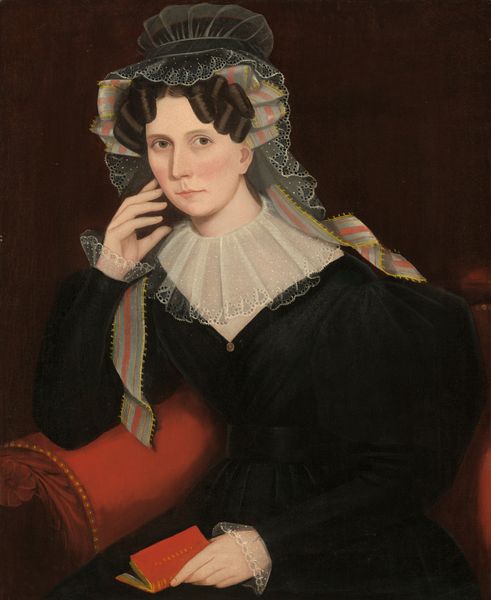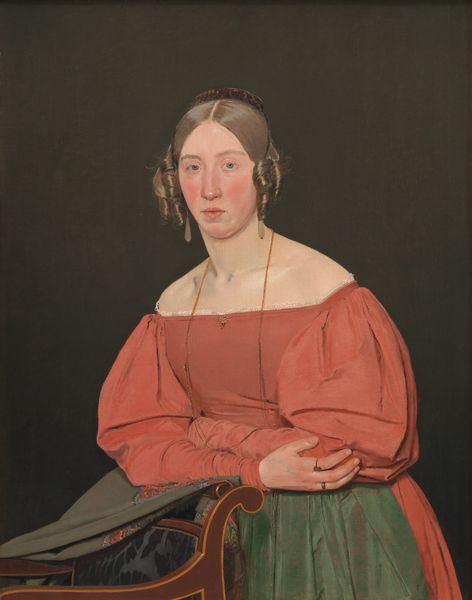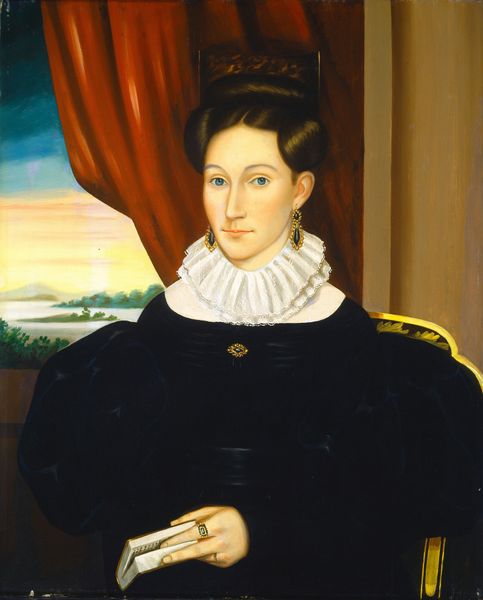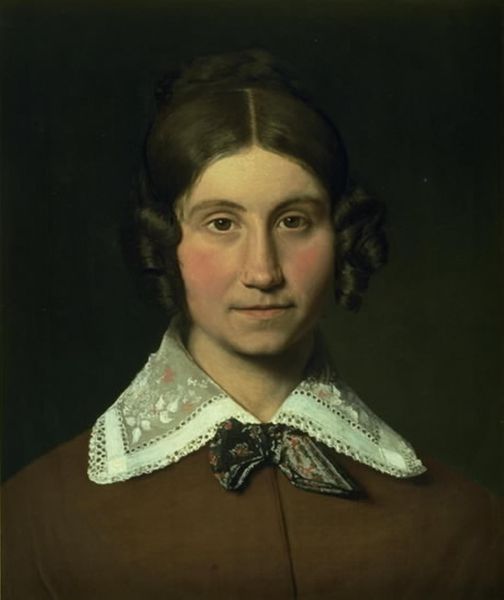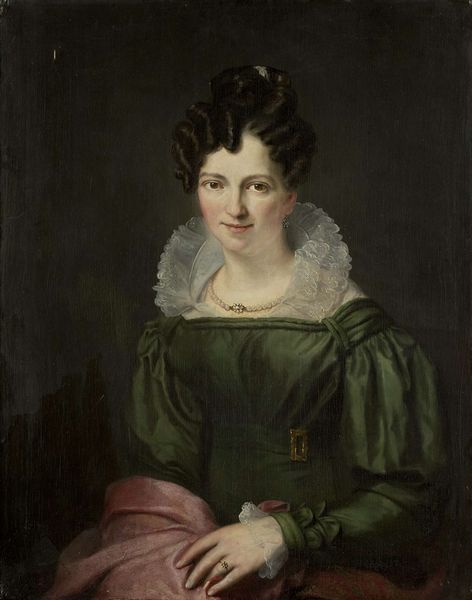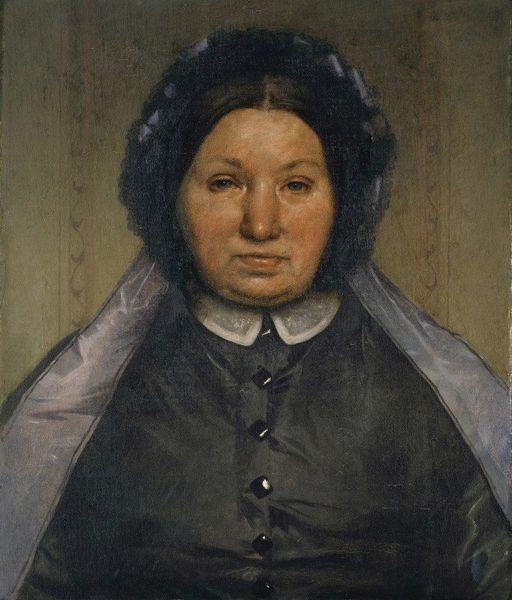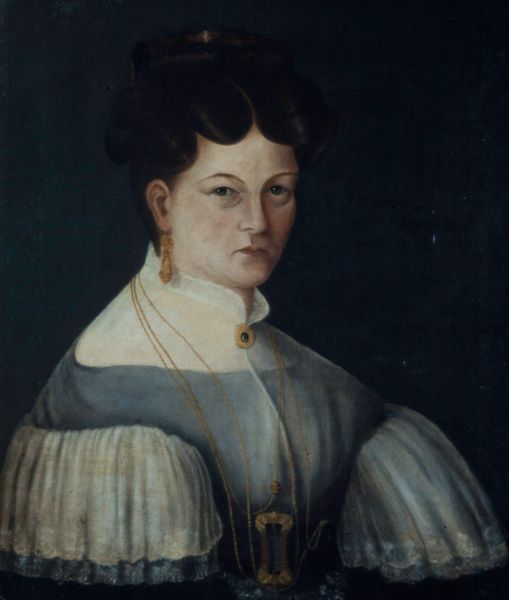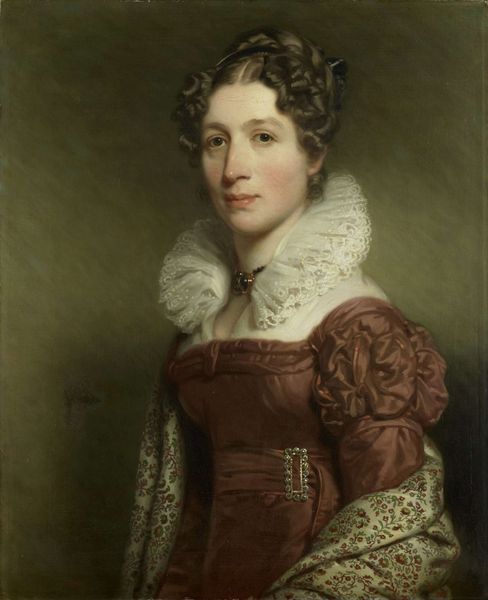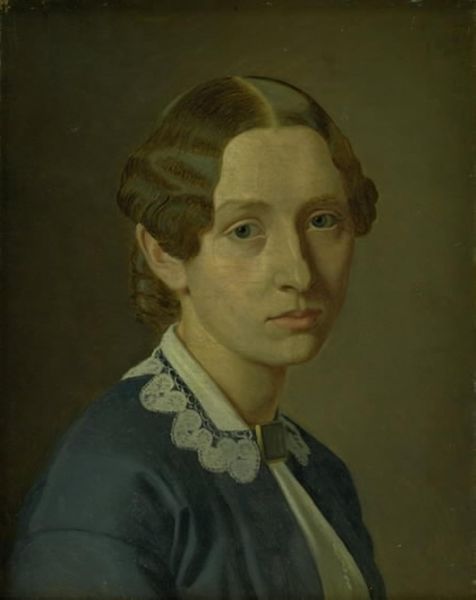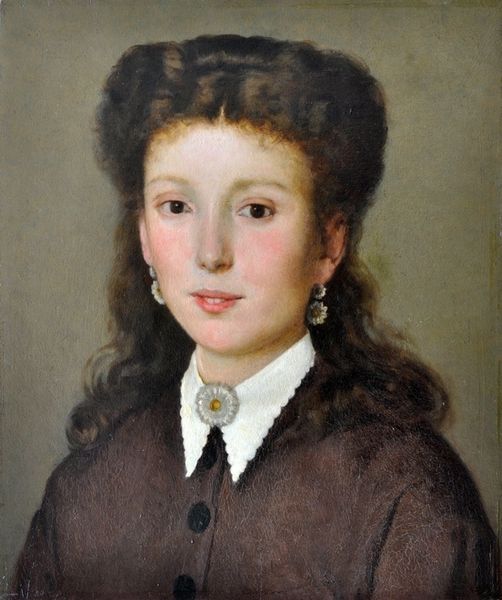
Portrait of the Artist´s Sister-in-Law, Susanne Købke, née Ryder 1830 - 1834
0:00
0:00
painting, oil-paint
#
portrait
#
painting
#
oil-paint
#
academic-art
Dimensions: 54 cm (height) x 47 cm (width) (Netto)
Curator: A striking portrayal, wouldn’t you agree? We’re looking at Christen Købke's "Portrait of the Artist’s Sister-in-Law, Susanne Købke, née Ryder," created with oil paint between 1830 and 1834. It is held here at the SMK. Editor: Yes, the dark palette gives it a serious, almost somber feel. But there's a compelling presence in her gaze, even though the color scheme seems to deliberately mute the image. Curator: Absolutely. Consider the restrictive societal roles of women during the Danish Golden Age. While Købke himself experienced some degree of artistic recognition, Susanne, like many women, was primarily confined to domestic life. Her expression, while reserved, subtly challenges those limitations, perhaps signaling an internal intellectual life. Editor: And the accessories themselves— the high collar, the complex hair, the simple wedding ring—they all seem to reinforce her position, visually codifying her role as wife and matron. What about the symbolic significance of the book and the desk beside her? Is this purely about representing education, or is there a deeper connection between literacy and liberation for women? Curator: That's the critical question. The book might function as a mere attribute of bourgeois respectability, or it may imply access to knowledge—potentially subversive. Is it, perhaps, a hint at a broader sphere of influence beyond the domestic? Editor: There's also something subtly confrontational in the directness of her gaze. It feels more intimate and personal, disrupting the formality typical of these commissioned portraits. Curator: Her unflinching gaze resists easy categorization. This painting transcends mere representation; it encapsulates the quiet defiance inherent in occupying a liminal space. Editor: Considering the visual constraints placed on women's appearances then, she is elegantly resisting this role. Thank you for guiding me. Curator: A wonderful observation. Thanks to you, too. It allows us to perceive her image through the different layers of history and representation.
Comments
No comments
Be the first to comment and join the conversation on the ultimate creative platform.
